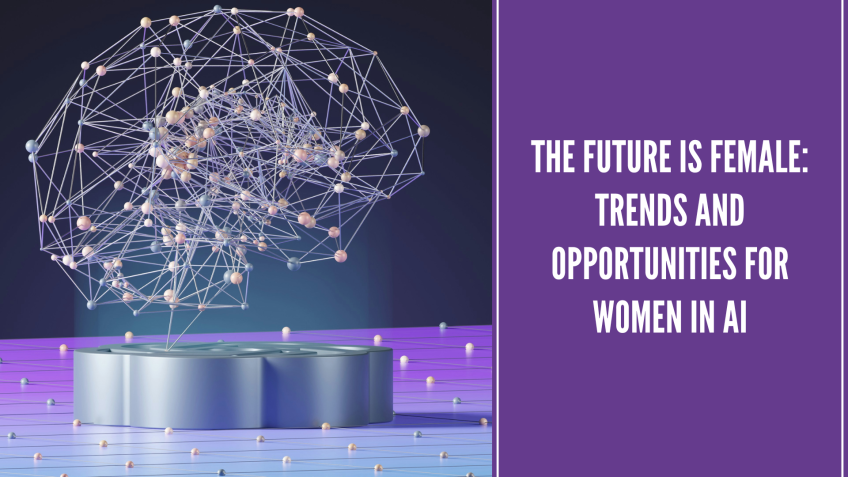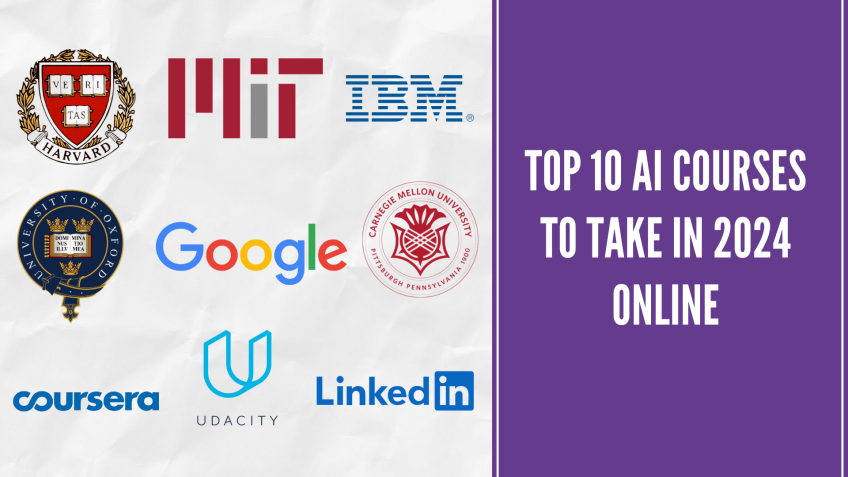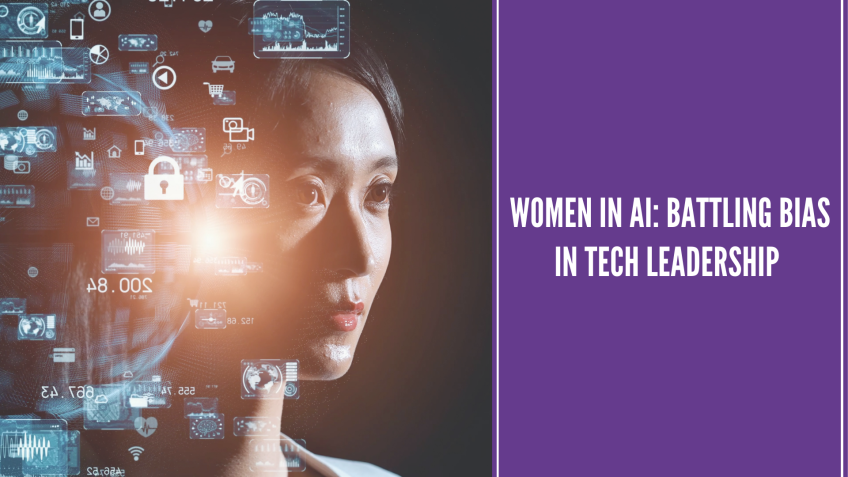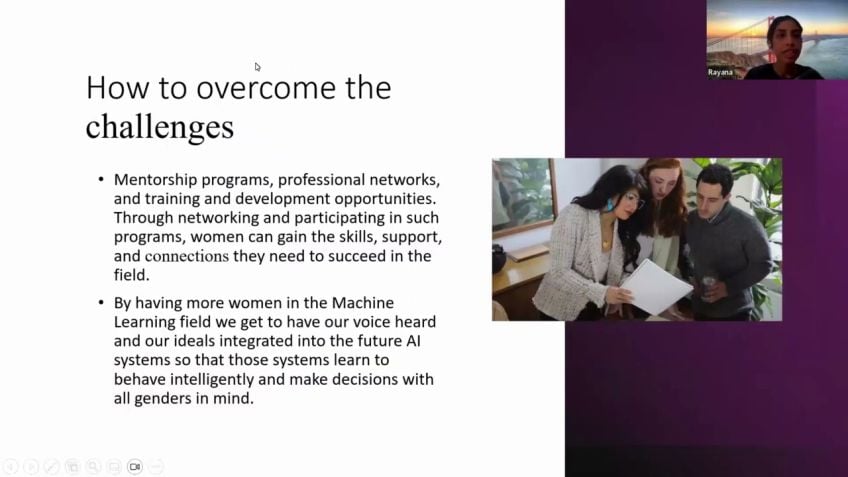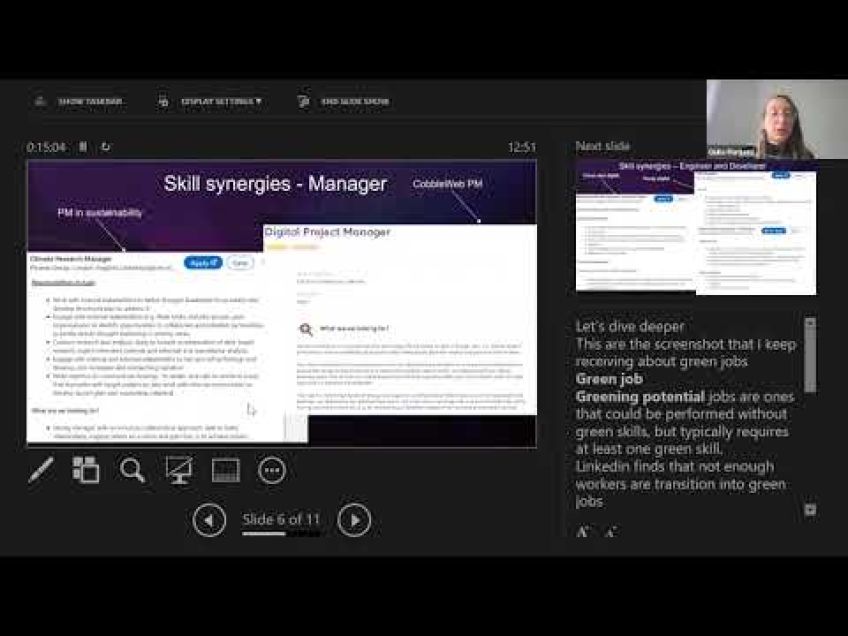Ambreen Kokab - Shah Role of Artificial Intelligence in Telecommunications
The Role of Artificial Intelligence in Telecommunications
Welcome to a dive into the crucial role of AI in the world of telecom. This article aims to highlight the drastic changes and opportunities AI brings to this field, from operational efficiency to enhanced customer experience.
About the Author
I am a Senior Network Consultant at Erickson with 11 years of diversified corporate and consulting experience across the telecom industry, working with prominent local, international, and startup firms. Armed with a passion for organizational excellence, social entrepreneurship, and a keen interest in AI, IoT, and 5G technologies, I leverage my technical expertise and industry insight to consult businesses in their tech journeys.
The Transformative Power of Artificial Intelligence
As Andrew Ng famously said, "AI is the new electricity". Just as electricity revolutionized virtually every aspect of life over a century ago, AI is now set to transform the technological landscape at an unprecedented pace.
This rapid change has become visible through COVID-19. Telecommunications infrastructure became the backbone of business continuity, government operations, and social interactions. People across the globe rely on networks for obtaining information, working from home or simply keeping in touch with their loved ones. This disruption showcases the vital need for AI-driven innovation in the telecom industry.
Hello AI, Goodbye Traditional Telecom
Did you know that today 5.27 billion people own a mobile device? That's 67% of the world's population, showcasing a massive shift in the telecommunications industry. The influx of progressive technologies, such as AI, 5G, IoT, cloud computing, and blockchain, are not only shaping the telecom sector but also influencing the global standard of living.
The Future of Telecommunications
Imagine year 2050 - a world where biometric chips conduct a full body diagnosis of your health, breakfast pills serve all the required nutritional needs, information lenses provide real-time data, and a simple command 'Alistair, launch Netflix' connects to the global network within a blink.
All this might seem unimaginable today, but these technologies are already in motion and soon might become a reality. That's the power of AI in the realm of telecommunications!
How AI Empowers Telecommunication Industry?
- Dynamic Resource and Configuration Engineering: This innovation can proactively detect faults with virtually no manual intervention, making the network self-healing. This would reduce the time of resource allocation from 'months to seconds.'
- Real-Time Network Optimization: AI helps automate and optimize complex network settings, predicting future traffic peaks, load distribution, and user behavior to maintain network performance and achieve automatic network scaling.
- AI-Enhanced Processes (RPA): Robot Process Automation combined with AI can automate high-volume, repetitive tasks thereby inducing operational efficiency.
- AI-Based Customer Care: Leveraging conversational AI platforms enhances the customer experience with personalized and efficient customer care.
- Fraud Detection: Telecommunication frauds can be detected quickly and anonymously on a real-time basis by AI, helping to secure networks and customers.
- Predictive Analytics: Utilizing AI, customer churn can be reduced, optimal resource utilization can be realized, and personalized products/services can be rolled out to improve the bottom line of the business.
To conclude, embracing AI is no longer optional but necessary for telecommunications companies. AI is heralding a digital reinvention for every sector, with a disruptive influence on the telecom industry impacting the world. Communication service providers are evolving from legacy service providers to becoming digital service providers, powered by AI.
However, the integration of AI in telecom comes with its challenges, predominantly the accessibility and usability of data for AI and Machine Learning algorithms and lack of relevant skill sets. But with time and patience, AI is set to revolutionize the telecom industry. As we enter this new era, we should be prepared for a world where humans collaborate with machines instead of being dominated by them.
Thank you for reading! I hope this article shed light on the powerful role AI plays in telecommunications today and its potential for a better tomorrow.
Video Transcription
Hello and welcome everyone to the session today about the role of artificial intelligence and telecommunications. I would like to start by saying huge thank you to women tech network and to all of you for showing interest in technology, especially artificial intelligence.So before we talk about the role of A I in telecom, let me introduce myself briefly. So I am a senior network consultant at Erickson, having 11 years of diversified corporate and uh consulting experience across telecom industry. I have consulted local and international telco joints like jazz, Zong Warre Oman, Tel and Oru. I have been engaged in entrepreneurial space and tech start ups for the past four years and in the promotion of futuristic technologies of A IIUT five G for the past year and having an interest in organizational excellence and social entrepreneurship. I'm also working on my own consulting firm.
So that was uh about me now, let's start. So uh as per Andrew Nga, I is the new electricity because uh just as electricity transformed everything 100 years ago with the advent of fourth industrial revolution, every aspect of our lives have also transformed and in ways we have not yet realized go on are the days when we used to step out of our houses and wait for a taxi or visit a travel agent for booking a flight or even a bank to pay our utility bills.
We have come really very far in our journey of technology and for new generations, this is their normal way of living. But for older generations, it's difficult to tackle the challenge of this changing landscape which is happening at an extremely fast pace. So like from last year, COVID-19 pandemic, perhaps more than any other event in the human history has demonstrated the importance of telecommunications infrastructure uh in keeping businesses, governments and societies connected and running together because of the disruption which was caused by the pandemic.
People across the globe rely on the networks for information learning, working from home or keeping in touch with their loved ones with disruptions. Due to A I, we need to take control of our future and prepare ourselves for the world that we are entering in. And it's not only limited to telecom industry, which plays no doubt a key role in powering every sector in the world today. So if telecom gets revolutionized through A I, it changes the way uh human operates in general. Uh So just 30 years back, we had no mobile phones, let alone a smartphone. And today 5.27 billion people own a mobile device. And that's 67% of the world's population, the telecom industry is at the beginning of an A I driven shift and soon there'll be no looking back. So just stop and imagine what impact A I together with futuristic technologies like five Giot cloud computing Blockchain is bringing in the way we live, work and interact with each other in an even more complex network society of the future. So how about we imagine life in the year 2050 30 years from today, a new biometric chip is installed in our body. It sends signals to our brains to gently wake us up and then being connected to the new 10 G network.
Our brain brain learns and remembers f back up to the cloud in the real time. In case something happens, even though the risk of contracting a bad disease is quite low as it does a full body diagnosis of our health in every four seconds. And if it finds any issues, it contacts the do doctor directly. Then in the morning we take breakfast pill which gives our body everything it needs the nutritional value that which is present in these pills, let us live 30% longer than in the past. Then are informational lenses which gives us all the information needed. And since it updates in the real time, rarely there is any unanswered question. We travel to work using a jetpack, but on the weekends with family, we use our electric self-driving car connected through real time wireless electricity.
Nearly 95% of the all federal traffic accidents have been eliminated globally. All communication is through a form of telepathy which is called thought recognition technology and everything around us is connected of our tooth, toothbrush shoes, our eyes, brain and all things in our home, making neural control of devices, machinery and vehicles. Possible.
Also imagine that in the evening, our telco provider prompts us of a cricket match going live in 30 minutes and redirect us to the closest restaurant or the bar that is playing it. Or if we choose to watch it at home, it offers us a package with highest possible quality for us to accept with a simple click. So although this value of life, uh this way of life seems unimaginable today, many of the things are already in words and it will not be long before they become a reality. Uh So knowing the potential of telecom along with A I, when you say Alistair launch net Netflix, what is at work here? A user using a smartphone commands it virtual assistant to launch an app making use of the big data. This is an experience that a customer goes through all the time, which is possible by Telco leveraging the power of A I and making use of Telco's advantages to achieve Telco's success. And now what do I mean by that? So basically Telcos has massive amount of data, right? It's C uh data of its you know uh consumer network, which is called the big data and that can be handled by A I resulting in greater operational efficiency. Then the automation of processes enabling excessive use of smartphones and applications results in increased revenues.
And of course, the technology history uh the research history of Telco combined with automation can provide actionable insights to enhance customer experience. So we see that in a way synergies exist here because telecom industry is not just providing basic services of internet voice anymore, but rather it's an epicenter of technological growth led by mobile broadband IOT and A I. Next, let's dig in to have oh heat to scar chickens and we talk with network operations. So as uh five G and IOD gain traction across the globe that are becoming more complex and operations need to shift from reactive to transform network operations include firstly, the dynamic resource and configuration engineering. So for having tons of resources and the configuration requirements uh require this technique can requirement uh by students can reduce time from month to second to proactive fault detection networks can analyze patterns within its data and proactively detect faults with no manual intervention making network becomes self healing, enabling telecom operators to effectively fix these issues before they even impact the customer.
So they become visible to them. And since such large and complex networks can have a lot of security breaches. So A I can help device protective mechanisms for these uh security breaches or customer attack, which can be then identified with immediate defensive action to protect networks.
So uh one example uh which improves radio net uh radio tower inspection by detecting and diagnosing cling problems or equipment malfunctions using A I powered video cameras and computer vision techniques. A case of A I along with telecom is real time optimization. So this is one of the core use case of telecommunications. Now, app five G networks has thousands of parameters require hyper parameter optimization. It's practically not possible to optimize such complex networks manually at such a large scale. And so what we need is self optimizing network or so.
And for that A I is essential which can use advanced algorithms to automate parameter settings and achieve hyper parameter optimization. And since these techniques are based on analyzing traffic and user pattern, they predict future traffic peaks, low distribution and user behavior to not only maintain network capacity and performance of the network KP I but rather also allow automatic network scaling. Moreover, it can also achieve energy savings by monitoring energy consumptions by hardware and overall network. So to visualize uh we had node level example in the in the uh earlier in the first youth game. This is the network level example. So secondary carrier prediction which predicts the strength offering as well as neighboring carriers in future to predict better future coverage and low volume prediction, which finds devices generating high loads to handover to underutilized cells on the network level. So this results in lesser measurement, better user experience and also reduced operational and maintenance costs. Now, moving on to the third use case, which is A I enhanced processes a few years ago when we used to think of A I, the most obvious thing that used to come to our mind was World World War, it was robots, right? You would agree to that.
And today, robots or RP are not only popular in the telecom industry but also in other industries. And combining A I with RP A can create a fully autonomous process end to end. So earlier, we discussed examples on node or network level. This is an example on an organizational level. The RP A is used to work in conjunction with P people by automating repetitive rule based and high volume tasks such as billing data entry, document generation using structured inputs and loaded, which is called attended automation.
And then if traditional IP is integrated with A I, it can help with tasks such as recognizing unstructured data, like in the documents, images, chat messages, learning from human feedback and then developing its own logic for data capture and classification task. This is called unattended automation.
And then these two automations together helps achieve intelligent automation which results in autonomous prophecy, liberates human workforce, avoids many clerical errors also drive operational efficiency. So such A I enhanced process have the potential to transform businesses as Deloits survey also suggests that 40% of the telecom executives say cognitive computing has transformed it within three years. And this also saved telecom millions of dollars at the time of human representative.
Moving on to the next use case, which is A I based customer. OK. And let me tell you this is very important because digital transformation happening across the world is based on improving customer experience. Using A I as per Gartner future of self service is customer L automation.
So offering A I based customer care is a strategy that every business is focusing on. And telecom industry is also leveraging conversational A I platform. For example, shall bos virtual assistant for 1 to 1 conversation to support customer request. 24 7, also smart speakers which not only control telecom services but also smart home appliances frequently used by the customers. Then there is a concept of dedicated hardware A I hardware in smartphone for intelligent processing. And then finally, we have deep voice technology which is the basis of voice assisted customer service like real time translation, biometric security, cetera. So these mechanisms are answering other capabilities which means that a customer would be trained by these E I assistants, creating a mindset of do it diy to customer la I. Now this is what is shaping the world of customer self-service and as per dupers research, his capabilities are cutting business expenses to $8 billion annually. Examples include Vodafone toy and Nokia's Mica which are impacting customer experience drastically. The second last use case of A I in the telecom is very important for telecom industry and that is thought detection products have always been persistent within the telecom industry as much as we know and have been unable to catch previously.
But with A I now things are really improving. So rosters have uh invented numerous ways to use services for free or on someone else's behalf. Their activities may vary from abusive roaming cases to duplicate parts, making fake profile, getting illegal access to ID or even stealing ID.
Each scenario has different anomaly patterns and this is where A I and ML methods can help detect patterns quickly and anonymously on real time basis using techniques such as uh service usage analytics, movement analytics, uh which is also as the tracking and invoice analytics because drug stores also keep tweaking their methods with more time and more data A I algorithms can identify fraudulent user data.
For example, with regards to the billing information from postpaid customers of mobile operators. So in a sense, they are achieving this with their network data of consumers. And globally, there are many companies avoiding these frauds with such techniques. Uh In the end, uh we have the final use case of A I which is predictive analytic. One of the classic example of predictive analytics is Netflix. So if you ever wondered how Netflix recommended just the right shows and movies for you the answer is predictive analytics. But how can it help in the context of telecom industry? That's the question because telecom industry faces a lot of challenges like customer churn market differentiation, optimal utilization of hyper resources, personalized products and services and even pricing pressures. So basically what happens is A I does sentiment analysis by collecting and analyzing customer data and then identifying best offers and innovative services to achieve real time customer satisfaction, which can then be indicated by net promoters, core NPS and customer experienced indexed ce I then printed a and also assist telecom company to launch micros personalized campaign for targeted customers at the right time by analyzing their habits and patterns such as purchase history, demographic data, qs preferences, et cetera.
And finally, the lifetime value of the customer, which in turn helps in product development, improved margins and price optimization. As for mckenzie's insights, telcos that implement a data driven and analytics based approach can reduce churn by almost 15%. So these mechanisms enable Telcos to save a lot of money and get more business insights, not only get an edge over other operators, but also have better utilization of network services. So as a conclusion, I is heralding a digital reinvention for every sector. But the disruption uh in telecom will impact the whole world. Communication service providers are on a journey from legacy service providers to becoming digital service providers because their only recipe for is to embrace and leverage the power of A I but but those telecoms that won't pay attention and deny it will be left behind. Of course.
So for example, think of Kodak and Blockbuster, they rest in peace as we speak. So the question is why some telecoms are finding it difficult to transform. Well, there are two major but quite basic hurdles. All telcos know that they have a lot of data but it's tricky to make it, make it accessible and usable for A I and Ml Algos. A lot of work needs to be done to get to that stage. And secondly, lack of finding the relevant skill sets to make use of the kind of data we need for A I, it's difficult to retain the people with the right skills. So now I want to end my by leaving you with the thought that future is the world of humans collaborating with machines. So rather than being dominated by machines, the question is how ready you are to collaborate with machine? That's all from my side. Thank you for listening and thank you women tech network and Anna for giving me this great opportunity to speak to all of you. Thank you.

